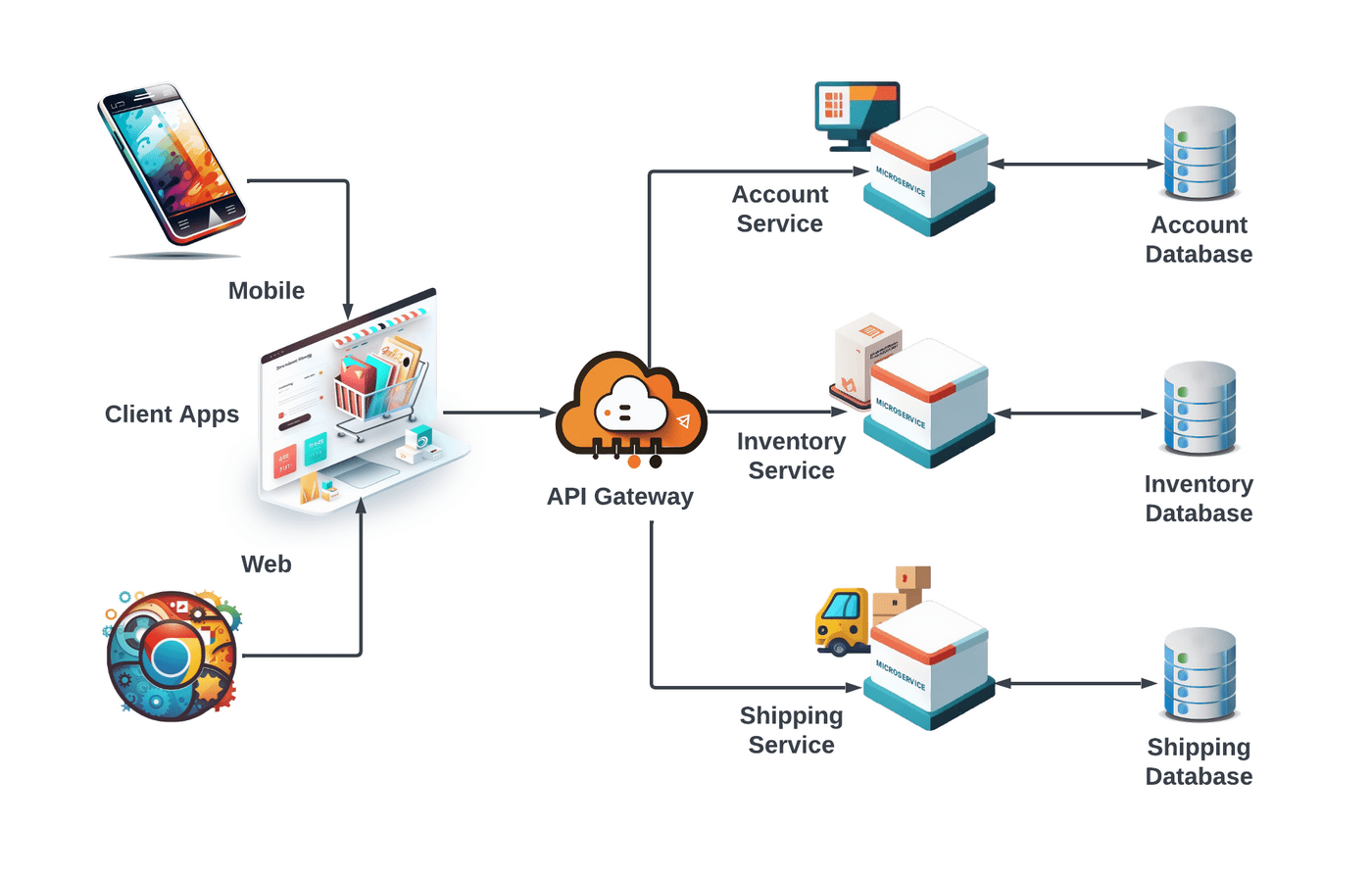From Monolith to Microservices: How Fine-Grained Architecture Can Help Your Business Grow

Considering that the world is changing ever faster, it is increasingly important that your company can keep pace with changing market situations, customer demands or unexpected challenges. So it is no coincidence that microservices have become increasingly popular as an alternative to traditional monolithic systems in recent years. Although both approaches have their own set of benefits and drawbacks, there are many scenarios in which microservices offer significant advantages over their monolithic counterparts. Particularly companies that are subject to high competitive pressure and have to react quickly to market changes can benefit from the use of microservices as they help organizations achieve greater agility, scalability, and flexibility.
So, what are Microservices?
Microservices are a series of small, independent services that all communicate with each other. Unlike with monolithic applications, where all functionality is implemented in a single, large block of code, each microservice is responsible for a specific task or functionality and can be developed, deployed, and managed independently.

Why use Microservices?
The most important advantage of using microservices architectures is, as already mentioned, the flexibility and scalability of your applications. Each service can be developed and deployed independently as well as changed, updated or scaled without affecting the entire system. This makes it easier to modify, update, or scale specific parts of your application. Gone are the days when adding new features or scaling your applications was a gargantuan task, involving high costs and the fear of a total system failure. Plus, you can choose the best technology for each service, rather than being limited to a single technology stack for the entire application.
Using the latest microservice technologies allows you again to react more quickly to changing requirements. In a monolithic system, it can be time-consuming and tedious for developers to make changes and deploy updates due to the size and complexity of the system. With microservices, however, your teams can work on small, independent services, allowing them to be more productive and efficient. And since the failure of one service does not immediately affect the entire system, microservices provide better stability and fault tolerance. Downtime is minimised and the overall reliability of the application is improved.
Are there any pitfalls?
As with everything, although microservices offer a whole range of benefits, they also come with their own set of challenges, that need to be overcome in order to successfully build (or transition your business from a monolithic system to) flexible, modular services. Microservices can make an application more complex due to the large number of independent services that need to be managed and orchestrated. This can be particularly challenging for organisations that are new to microservices development and lack the necessary experience. Thus, transitioning from a monolithic system to microservices can be a significant undertaking, requiring careful planning and execution. Without a solid plan, profound training and experienced professional assistance, this can become a daunting task.
Benefit from the longstanding experience of our senior development team
Luckily, you can benefit from the longstanding experience of our senior development team that will help you migrate your monolithic IT system to modern microservices and serverless architectures safely and smoothly. In everything we do, we always follow a simple best-practice approach - with long-term scalability in mind. We work in close cooperation with you throughout the migration process, conducting an in-depth analysis of your system and developing a customized plan to ensure a frictionless transition. We provide you with the tools and knowledge to automate and streamline the deployment process. We will ensure that you have robust security measures in place to protect your services and applications. And by using Infrastructure as Code (IaC), we build reproducible systems that you and your team can easily control later on. But we don't just stop at migration - we also believe in the crucial importance of knowledge sharing to strengthen your team. We offer training, workshops and one-on-one pair programming sessions to help your team and your business successfully master the change.




